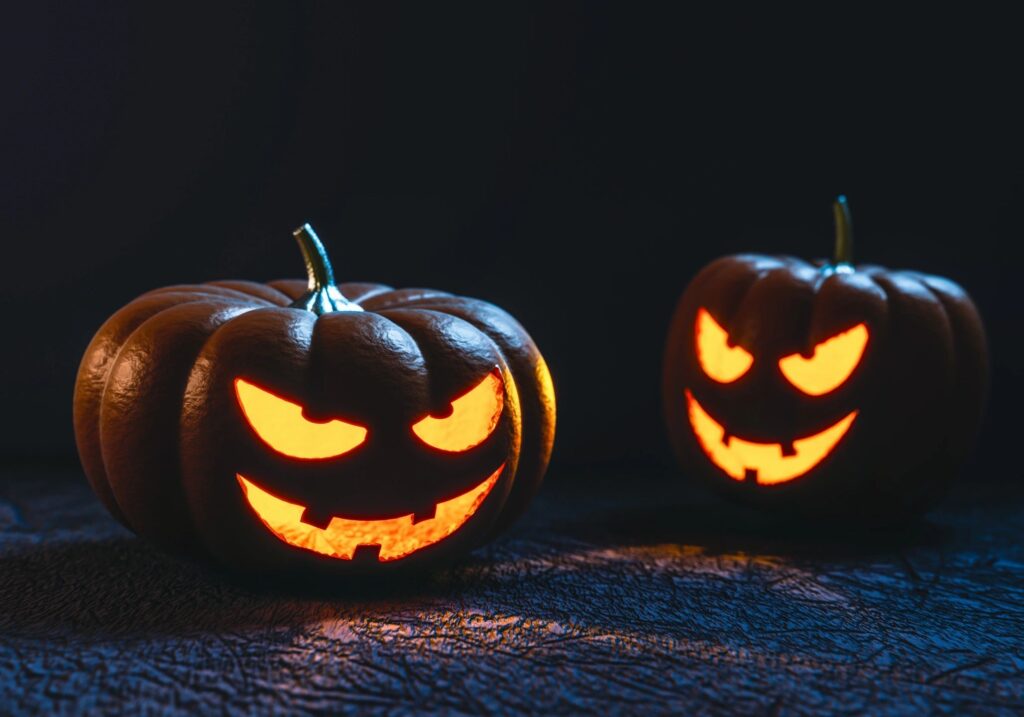
Chow Line: Pumpkin-carving the Safe Way to Avoid Injury
I plan to carve some pumpkins for Halloween, but I’m trying to avoid injuring myself like I did last year. Do you have any tips on how I can do that?
It’s that time of year when pumpkins are being harvested and readying to carve. And while carving a pumpkin can be a fun, festive, fall family event—as long as you know what you’re doing—it’s important to do so safely.
Even though pumpkins are a beautiful, tasty vegetable (or fruit, depending on who you ask), carving them can result in injuries if you aren’t careful.
One thing to keep in mind is choosing the right pumpkin to carve.
There are several kinds of pumpkins—some that you eat, and some that are typically used for carving, said Jenny Lobb, a family and consumer sciences educator for Ohio State University Extension. OSU Extension is the outreach arm of The Ohio State University College of Food, Agricultural, and Environmental Sciences (CFAES).
Varieties include jack-o’-lanterns, colored pumpkins, pie pumpkins, and specialty pumpkins such as the Rouge Vif d’Etampes, or Cinderella, pumpkin.
“Pie pumpkins, which are smaller and sweeter in flavor, are typically used for baking and cooking, while jack-o’-lanterns are typically used for carving,” Lobb said.
Once you’ve chosen the pumpkin, it’s important to know how to hold it, to avoid injury when carving. Because pumpkins are round, tough, and slippery, carving them can sometimes result in slice, puncture, cut, or stab wounds to hands and fingers, which could result in a quick trip to the hospital, according to the American Society for Surgery of the Hand (ASSH).
This is significant, considering that between October and November 2018, some 2,700 Halloween-related injuries involved trips and falls, according to the U.S. Consumer Product Safety Commission. Additionally, 44% of Halloween-related injuries were related to pumpkin-carving activities, while 27% of the injuries included laceration; ingestions; and costume-, pumpkin-, or decoration-related injuries.
“Pumpkin-carving, costumes, unfamiliar homes, and young children traveling in darkness all provide possible scenarios for accidents and injuries,” Craig Phillips, orthopaedic hand surgeon and spokesperson for the American Academy of Orthopaedic Surgeons (AAOS), said this week in a written statement. “It is important for parents to establish clear boundaries with their kids and teach them safety tips to ensure they have a positive experience, rather than having to visit the hospital.
“Using proper pumpkin-carving instruments and cutting away from the body is just one way to avoid musculoskeletal injuries.”
To reduce the risk of injury, safety experts with the AAOS, the U.S. Consumer Product Safety Commission, and ASSH offer these tips:
- Dry your hands and the pumpkin before carving.
- Use the right tools. If you can, use a pumpkin-carving kit that has specialty tools designed to carve through rinds, poke holes, and scoop out the pumpkin seeds and innards.
- Stabilize the pumpkin by placing one hand on top of the pumpkin and then carving, working your way downward. You can also cut a hole in the bottom of the pumpkin to scoop out the insides.
- Use a spoon to remove the seeds.
- Work in a clean, dry, well-lit area when you carve the pumpkin.
- Don’t let young kids carve the pumpkin. You can have them draw the pattern that you plan to cut and scoop out the insides, but kids 14 and under shouldn’t use the cutting tools to carve.
- Stand at least two arms’ lengths away if you are watching someone else carve the pumpkin.
- To prevent fires, consider using a flashlight instead of a candle in your carved jack-o’-lantern.
- If you do cut yourself, apply direct pressure to the wound with a clean, dry cloth. Then, clean the wound with an antibiotic, and apply a bandage. If the bleeding doesn’t stop in 15 minutes, seek medical attention.
Chow Line is a service of The Ohio State University College of Food, Agricultural, and Environmental Sciences and its outreach and research arms, OSU Extension and the Ohio Agricultural Research and Development Center. Send questions to Chow Line, c/o Tracy Turner, 364 W. Lane Ave., Suite B120, Columbus, OH 43201, or turner.490@osu.edu.
